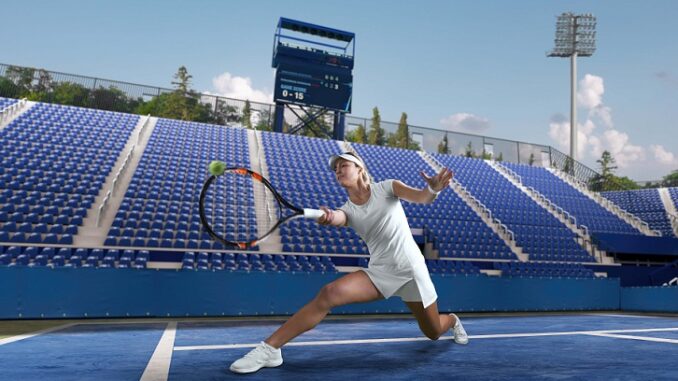
As professional athletes, tennis players are among some of the most fit individuals in the world. With the need to combine speed, agility, quickness, endurance, and power, the training methods and plans that tennis pros must adhere to in order to stay fit and on top of their game are often intense and thorough.
Elite tennis professionals will engage in intense on-court training sessions for between 3-4 hours (broken into 90-minute to 2-hour sessions) at least four days a week and lighter sessions for 1-2 days.
Sandwiched in between or around their skills sessions will be their strength and conditioning workouts ranging from 1 to 2 hours per session.
From forty-six-year-old former Wimbledon champion Martina Navratilova to Ivan Lendl to Serena Williams and Roger Federer, professional tennis players must be at peak physical condition to battle through the ATP and WTA grind.
Moreover, as tennis continues to grow in popularity, as noted on Clutchbet.com, the pressure for players to be in optimal condition is at an all-time high.
On-Court Training
Whether they are using a ball-feeding machine or a training partner, on-court drills are done with a specific focus in mind. Consistent work on forehand and backhand groundstrokes, volleys, short games, slices, spins, serves, volleys, and returns are all broken down into precise details and situations.
Players may also work with partners or coaches to rally back and forth, working on shot placement either down the sideline, down the middle of the court, or crosscourt.
While working with a machine will provide more reps, working with a live partner will give players a more organic and realistic training session.
Countless hours of repetitive practice demand not only tennis professionals to be physically in shape but also mentally.
Off Court Training
Tennis is a game of speed, agility, endurance, flexibility, power, and the ability to react quickly. As most professional tennis matches can last several hours, persistence is one of the focal points of off-court training sessions.
Running at a steady pace for 60 minutes 3-4 days per week will help build up stamina, while more intense sprinting and change of direction-focused sessions will be shorter.
Agility drills such as shuttle runs, change of direction, and ladder work will help players improve their athletic ability and footwork.
Pilates and yoga workouts are essential for small muscle focus and flexibility and help recover from more intense, heavy-lifting training sessions.
While many are under the assumption that the upper body (biceps, triceps, shoulders, chest, upper back) determines the power of one’s swing, those muscle groups are used more for controlling the swing motion and shape of the shot.
As with almost every sport, the core muscles are the focal point for power and athletic movement for any tennis player, whether it is a weekend warrior or an ATP/WPA star.
From static exercises such as planks to more dynamic movements such as medicine ball throws, a strong core will transfer power to your upper body and improve movement to your lower body.
Tennis players, especially at the professional level, demand a lot from their lower body in order to move quickly in various directions, rotate their hips, stop on a dime, or explode vertically.
Traditional lower body exercises such as squats, deadlifts, and lunges are but a few of the exercises that can be found as part of a tennis player’s workout regimen.
Like all other professional athletes, a professional tennis player’s diet is equally as crucial as their workout program when it comes to staying fit. Fueling themselves with the proper balance of foods and beverages will help prepare their body before matches and during and after.